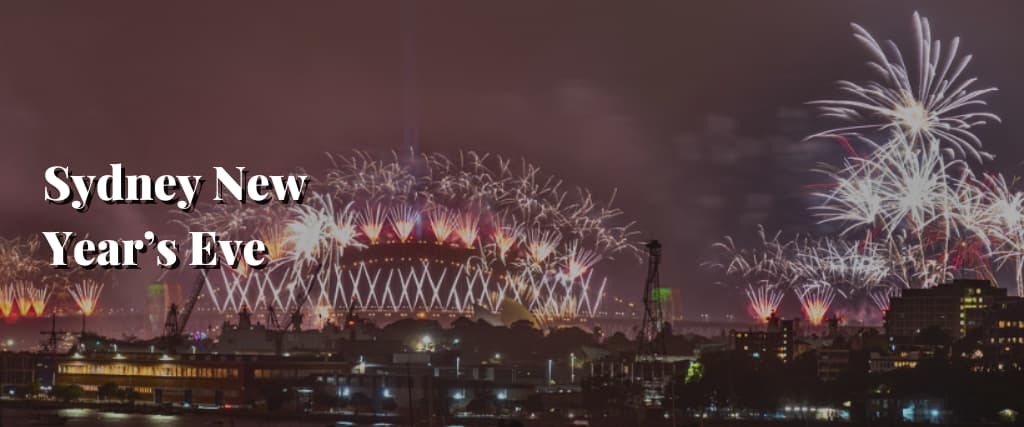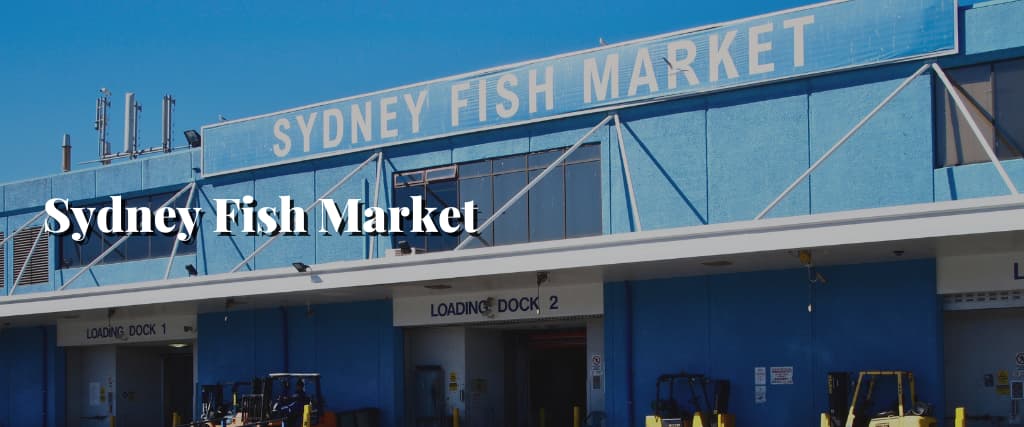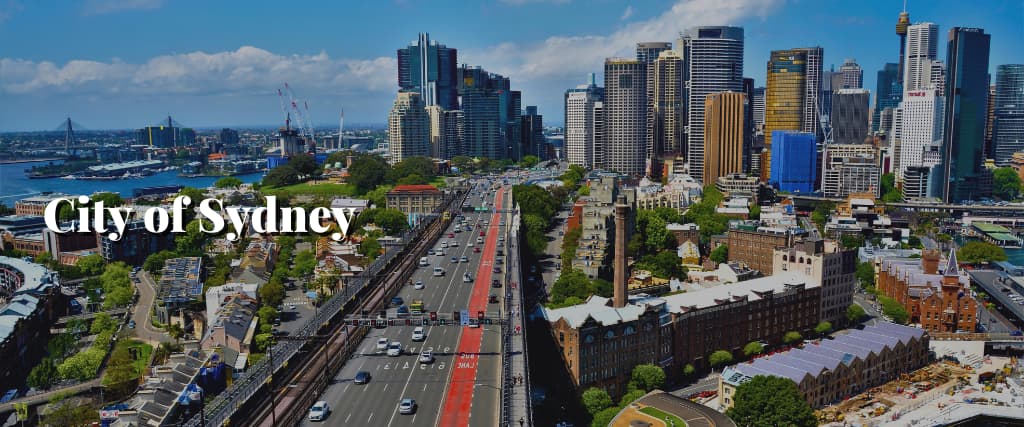Sydney is a city that continues to surprise even its long-term residents with discoveries. You can collect various exciting and amusing facts about Sydney. For those curious and want to learn more, below is a list of sources for each statistic.
101 Interesting Sydney Facts That Many Locals Are Unaware Of

1. Due to its arch-based construction, the Sydney Harbour Bridge has earned the nickname “The Coathanger.”
2. One of the deadliest spiders on Earth, the Sydney Funnel Web Spider, can kill a person in about 15 minutes. Its teeth are strong enough to pierce fingernails and gloves.
3. Dr. Mark Lidwill developed the first pacemaker in Sydney in 1926 at the Crown Street Women’s Hospital. Although Dr. Lidwill’s use of the pacemaker allowed the infant to continue a heartbeat for 10 minutes, he refused accolades due to ethical concerns. Thanks to his creative and life-saving efforts, the baby was able to be resuscitated.
4. In the second part of the 20th century, Sydney earned the moniker “Sin City” due to the influence of organised crime and the prevalence of corruption at the highest levels of politics, the legal system, and the judicial system.

5. It’s a common fact that Sydney has approximately 100 beaches, ranging from just a few meters to many kilometres. However, you’re unlikely to see a comprehensive list of all these beaches in one place.
6. The Australia Day Regatta in Sydney Harbour is the world’s oldest continuously-conducted annual sailing regatta. The first event was in 1837.
7. In 2007, Bondi Beach saw 1,010 bikini-clad ladies. The event broke the record for history’s most extensive group swimwear picture shoot. Several Guinness World Records were established in Sydney.
8. In the Sydney Opera House, 15,500 led lights are replaced annually. Check the ceiling the next time you visit the Sydney Opera House to see if you can identify any burned-out light bulbs. Make sure to notify the usher about it.
9. Among the numerous famous Sydneysiders are Toni Collette, Rebel Wilson, Iggy Azalea, and Russell Crowe. Have you ever noticed a renowned person walking around Sydney or other celebrity sightings?

10. Most outdoor scenes for the well-known Australian soap opera Home and Away are filmed at Palm Beach in the Northern Beaches area.
11. Some well-known movies with Sydney-based productions include The Matrix, Planet of the Apes, The Great Gatsby, Independence Day, Frost/Nixon, and The Great Gatsby. Can you think of any more movies that were filmed in Sydney?
12. The Sydney Royal Easter Show is the largest annual event in Australia, drawing in approximately 900,000 visitors each year from the local area and abroad. While one may assume that the Sydney Festival holds this title for the biggest yearly event in Sydney, this is not the case.
13. Sydney has been the starting point for many renowned bands, such as Richard Clapton, Johnny O’Keefe, Billy Thorpe, and AC/DC, to name a few. Interestingly, on New Year’s Eve in 1973, AC/DC performed for the first time at Bondi Lifesaver in Australia.
14. Sydney’s 1580 square kilometres are more than double the 780 square kilometres of New York. Regarding square miles, Sydney is 610, and New York is 301.
15. At 504,000 megalitres of water, Sydney’s natural harbour is the deepest in the whole globe. For reference, 264,172 US gallons are equivalent to one megaliter.
16. Before the opening of the Sydney Harbour Bridge, 96 railway locomotives were utilised to test its structural stability. Knowing this before crossing the bridge and observing its oscillating movement each time a train passed beneath it would have been helpful.
17. Francis De Groot, a former cavalry commander, rode up on his horse to cut the ribbon that signalled the formal inauguration of the Sydney Harbour Bridge on March 19, 1932. He did it in the name of “the respectable residents of New South Wales,” proclaiming the bridge open. De Groot was eventually found to be mad, but he was penalised for the ribbon’s replacement cost. How much did the ribbon cost?
18. In 1972, the 102-year-old SS Ayrfield ship, which served as a transport ship during World War II, was transported to Sydney’s Homebush Bay for dismantling. Nevertheless, the SS Ayrfield was turned into a naval forest when the plans fell through—a woodland on the water.
19. The Sydney Harbour Bridge is the world’s highest steel arch bridge and most giant long-span bridge. You’ll discover many facts throughout the Sydney Bridge Climb, including this one.
20. The oldest public structure in Sydney’s Central Business Area is the Sydney Mint, constructed between 1811 and 1816. If you’re ever searching for touristic things to mail or bring home with you, the Sydney Mint also features one of the most fantastic gift stores.
21. At 1,001 feet above the Sydney CBD, the Sydney Tower, the highest building when it was completed in 1981, remains the second-tallest freestanding building in all of Australia. If you’re interested, there is an annual challenge up the stairs of the Sydney Tower. How many steps are needed to climb to the peak of the Sydney Tower?
22. Cadman’s Cottage, situated in The Rocks, is the oldest residential building in Sydney. Constructed in 1816, it must have been a coveted piece of real estate.
23. Australia’s George Street is the country’s oldest street.
24. Sydney Ferries, in business since 1875, transport nearly 14 million people annually throughout Sydney.
25. The Sydney Opera House’s construction cost $102 million instead of the estimated $7 million.
26. At a price per square meter of $20,900 and a typical property value of $7.38 million, Point Piper in Sydney’s Eastern Suburbs ranks as the ninth most expensive city in the world.
27. McKell Beach in Darling Point, which can only be reached by canoe at low tide, is the narrowest beach in Sydney.
28. The Queen Victoria Building, built between 1894 and 1898, bears its name in honour of the Diamond Jubilee of the Queen of England in 1897.
29. The third busiest opera company on the planet is Opera Australia.
30. The well-known Bondi coastal walk in Sydney offers views of bays, beaches, and ocean pools. The walkway runs 6 kilometres, and you can finish in roughly 2 hours.

31. The Sydney New Year’s Eve display in 2017 utilised approximately 7 tonnes of pyrotechnics, including 12,000 shells, 25,000 shooting comets, and 100,000 individual pyrotechnic effects.
32. In 1842, Sydney received city status.
33. Compared to 22.2 per cent of the Australian population, 31.7% of Sydney’s residents were born outside Australia.
34. Ambrosia in Sydney created the giant burger ever, breaking the previous record. The massive burger comprised 95.5 kilograms of beef patties, 120 eggs, 150 pieces of cheese, 1.5 kilos of beetroot, 2.5 kilograms of tomatoes, and nearly 2 kilograms of lettuce.
35. UNESCO designated the Greater Blue Mountains Region as a World Heritage Area in November 2000 because it is home to 13% of the known eucalyptus species worldwide.
36. In 2011, an anticipated 1,745,827 individuals were working in the Sydney Area, with wholesale trade, medical services, social assistance, and manufacturing industry ranking as the top three industries by employment.
37. The fourth most extensive gallery in Australia and Sydney’s most significant public gallery is the Art Gallery of New South Wales (AGNSW), which opened in 1880.
38. By 2036, the Sydney Metropolitan Region’s population is expected to increase by about 2.2 million, reaching over 5 million.
39. Since 1982, Carols in the Domain has hosted Australia’s most famous free Christmas concert.
40. Seven in ten Sydney residents were born outside their country of birth, and immigrants are responsible for seventy-five per cent of Sydney’s yearly population increase.
41. The Sydney Opera House was built over 14 years, requiring 10,000 people, and was finally finished in 1973 for $102 million, more than 14 times the initial budget.
42. The most extensive open-air sculpture exhibition in Australia, “Sculpture by the Sea,” debuted at Bondi Beach in 1996.

43. The Sydney Fish Market is the third-biggest fish market in the world and the largest market of its sort in the Southern Hemisphere.
44. The Sydney Harbour Bridge required 272,000 gallons of paint to complete in 1932. Only for the initial coat!
45. The Sydney Opera House was built using glass measuring 6,233 square meters in colour topaz. The drink was custom-made by the French company Boussois-Souchon-Neuvesel in a hue reserved exclusively for the Sydney Opera House.
46. The Grand Organ in the Opera consists of 10,154 pipes and took a decade to construct. It is considered the largest mechanical tracker-action pipe organ ever built.

47. The postcode for Sydney is 2000, which corresponds to the year that city held the Olympics.
48. In the Southern Hemisphere, Sydney is located at a comparable latitude to Cape Town and Buenos Aires, and in the Northern Hemisphere, Los Angeles, Casablanca, and Beirut.
49. Grey was the only colour readily accessible in quantities sufficient to paint the Sydney Harbour Bridge when constructed.
50. The Sydney Opera House’s “sails” have a subtle chevron pattern made of 1,056,000 tiles in two colours: glossy white and glossy cream, although they seem entirely white from a distance.
51. Australia’s first natural history museum, the Australian Museum, was founded in Sydney in 1857.
52. In Sydney’s Domain Parking, the Fast Moving Walkway is 207 meters long and moves at a speed of 0.67 meters per sec. It is the world’s third-longest walkway and the longest in the Southern Hemisphere.
53. The Sydney Swans are the city’s AFL side, or “Aussie Rules” as it is called in Australia. In New South Wales, there is only one team, the Swans.
54. The Daruk tribe, whose territory formerly stretched from Botany Bay to Pittwater, is known for having left 2000 Aboriginal rock carving sites around the Sydney region.

55. Australia’s first publication was The Sydney Morning Herald. Considering that 1831, it has been printed.
56. Australia’s first university, the University of Sydney, was founded in 1850.
57. Since 1961, the population of Sydney has been increasing by over 250,000 people every decade. As of June 2015, the estimated population of Sydney was 4.92 million.
58. In Sydney, there were 54,746 residents with indigenous ancestry as of 2011.
59. Australian Football was invented by Sydney, Henry Harrison, and Tom Wills. During his youth, Tom had participated in Marngrook, a game played by Aboriginals. Although the game was initially not well received in Sydney, it quickly gained popularity in Victoria and became renowned.
60. 200,000 visitors spearhead the Sydney Opera House tour yearly, home to 3,000 events.
61. The bass vocalist, actor, and civil rights activist Paul Robeson was the inaugural performer at the Sydney Opera House. Ol’ Man River was sung to the building workers by Robeson in 1960.
62. Australian one and 2-cent coins were phased out in 1991; after melting, the coins were repurposed as bronze medals for the Sydney Olympics in 2000.

63. In 1814, a hospital was intended to be housed at the Mint Building on Queen Street. The contractors were compensated with over 40,000 gallons of rum, so it was dubbed the Rum Hospital.
64. In a 1956 contest to construct the Sydney Opera House, three judges initially disqualified Jorn Utzon’s contribution. Nevertheless, the fourth judge chose it and praised it as exceptional. Mr. Utzon beat two hundred thirty-two other competitors.
65. Following the election of a new Liberal government and the Ministry of Works ceasing payment to Mr. Utzon, he resigned as the principal architect of the Opera House in February 1966. Despite widespread demonstrations advocating for Utzon’s reinstatement, he left Australia in April of that year.
66. On October 20, 1973, Queen Elizabeth II officially opened the Sydney Opera House. Since its inauguration, the Queen has visited the Opera House twice.
67. The sails of the Opera House were constructed using $100,000 cranes developed in France, especially for the task.
68. The Sydney Opera Home is 120 meters in width by 185 meters in length. The tallest roof height is around 66 meters above sea level, equivalent to a structure of 22 stories.
69. The roof of the Sydney Opera House comprises 2,294 precast concrete panels, each weighing up to 14 tonnes. These panels are held together by a tensioned steel cable stretching over 350 km. To put that into perspective, if the line were laid end to end, it would reach to Canberra.
70. 645 kilometres of electrical wiring and 6,220 square meters of glass make up the Sydney Opera House.

71. A total of about 6.0 hectares make up the Sydney Opera House’s overall site. On the site, eight Boeing 748s may be parked wing to wing.
72. Two million people attend the opera performances at the Sydney Opera House each year.
73. The Concert Hall, with 2,679 seats, is the biggest of the seven venues in the Sydney Opera House. The Utzon Room, with 210 seats, is the smallest venue. There are 1,000 rooms in all.
74. According to UNESCO, the Sydney Opera House is a “great urban sculpture placed in a spectacular waterscape, at the extremity of a peninsula protruding into Sydney Harbour,” inscribed as a World Heritage site in 2007.
75. The last Mr. Olympia bodybuilding championship won by Arnold Schwarzenegger was held in the Concert Hall of the Sydney Opera House in 1980.
76. The Sydney Opera House is accessible to the public 363 days a year, only closing on Good Friday and Xmas Day. However, staff members are on duty around-the-clock, 365 days a year.
77. The Greater Sydney area is 12,367 square kilometres (4,775 square miles), whereas the city’s urban area is 1,687 square kilometres (651 square miles). Sydney’s inner city is 25 square kilometres (10 square miles).
78. In Sydney, over 240 languages are spoken, and roughly one-third of locals use a language besides English at home.
79. Sydney is one of the most cosmopolitan cities in the world; about 34% of the population reports being born outside the country, which includes people from various nations.
80. Sydney is one of the most expensive cities in the world, yet according to the 2014 Mercer Quality of Life Study, it has one of the highest standards of living, ranking it one of the most liveable.
81. Over 4,300 prisoners lived in Sydney between 1788 and 1792, yet maps from this era do not depict any jail structures. Instead of being imprisoned, criminals were brought to Sydney as their punishment.

82. There are 658 suburbs inside the boundaries of metropolitan Sydney. Thirty-three of these suburbs, each near the CBD, are under the jurisdiction of the City of Sydney.
83. In 2013, approximately half of all foreign tourists to Australia visited Sydney, which had over 2.8 million visitors from abroad. Moreover, over 8.1 million inbound and domestic tourists stayed in the city in 2013. In 2012, there were 480,000 tourists and 27,500 overnight guests daily.
84. International students like Sydney more than any other city globally. Over 50,000 international students are enrolled in the city’s universities, and another 50,000 attend its English language and vocational schools.
85. The National Institute of Art in Sydney was attended by Mel Gibson, Baz Luhrmann, Judy Davis, and Cate Blanchett.
86. Since 1971, a 14-kilometre (8.7-mile) running event called the City2Surf has been organised annually from the CBD to Bondi Beach. In 2010, over 70,000 runners were involved, making it the world’s biggest race.
87. It is true that temperature fluctuations cause the peak of the Sydney Harbour Bridge arch to move up and down by approximately 180 mm (7 inches) each time.
88. A horse and rider crossed the Sydney Harbour Bridge for threepence, and a vehicle for sixpence, when it was opened in 1932. The current peak-time toll is $4.
89. Paul Hogan, a well-known Aussie, used to work on the Sydney Harbour Bridge as part of a crew almost permanently repainting it. They would begin the next layer of tint after completing the previous one.
90. Philippe Petit stopped traffic in 1973 by walking a wire between the Sydney Harbour Bridge’s two north braces. After a year, Petit made news worldwide when traversing the World Trade Center’s Twin Towers.
91. The Sydney Harbour Bridge’s four towers on both sides are entirely ornamental.
92. Sydney earned a spot in the Guinness Book of World Records for creating the longest pizza queue, measuring 221 meters in Leichhardt’s Italian neighbourhood.
93. In Sydney, one in eight residents is over 65.
94. The primary dialects in Sydney are English, Cantonese, Arabic, Greek, Mandarin, and Vietnamese.
95. Captain Arthur Phillip gave the area its name, Manly, in honour of the local aboriginal population, citing “their confidence and masculine conduct” as the reason.
96. The Grand Organ at the Sydney Opera House Concert Hall has around 10,000 pipes, making it the most effective mechanical mechanism globally. Its construction took ten years.

97. The $738 million, 2.3-kilometer Sydney Harbour Tunnel was finished in 1992. Its usage is predicted to reduce crossing speed by about nine minutes, resulting in annual fuel savings of 13 million litres.
98. Sydney has over 3.5 million foreign tourists each year.
99. The renowned Sydney Opera House presents at least 3000 performances annually.
100. Architect Francis Greenway, who came to Sydney as a prisoner in 1814, designed the Macquarie Lighthouse in Watsons Bay, St. James’ Church, Hyde Park Barracks, and the Sydney Conservatorium of Music.
101. A fun side note: Greenway was on the inaugural Australian $10 banknote. A random selection considering that Greenway had admitted to faking a financial document and received a 14-year prison term: Francis Greenway is likely the only forger ever convicted and featured on a banknote.
